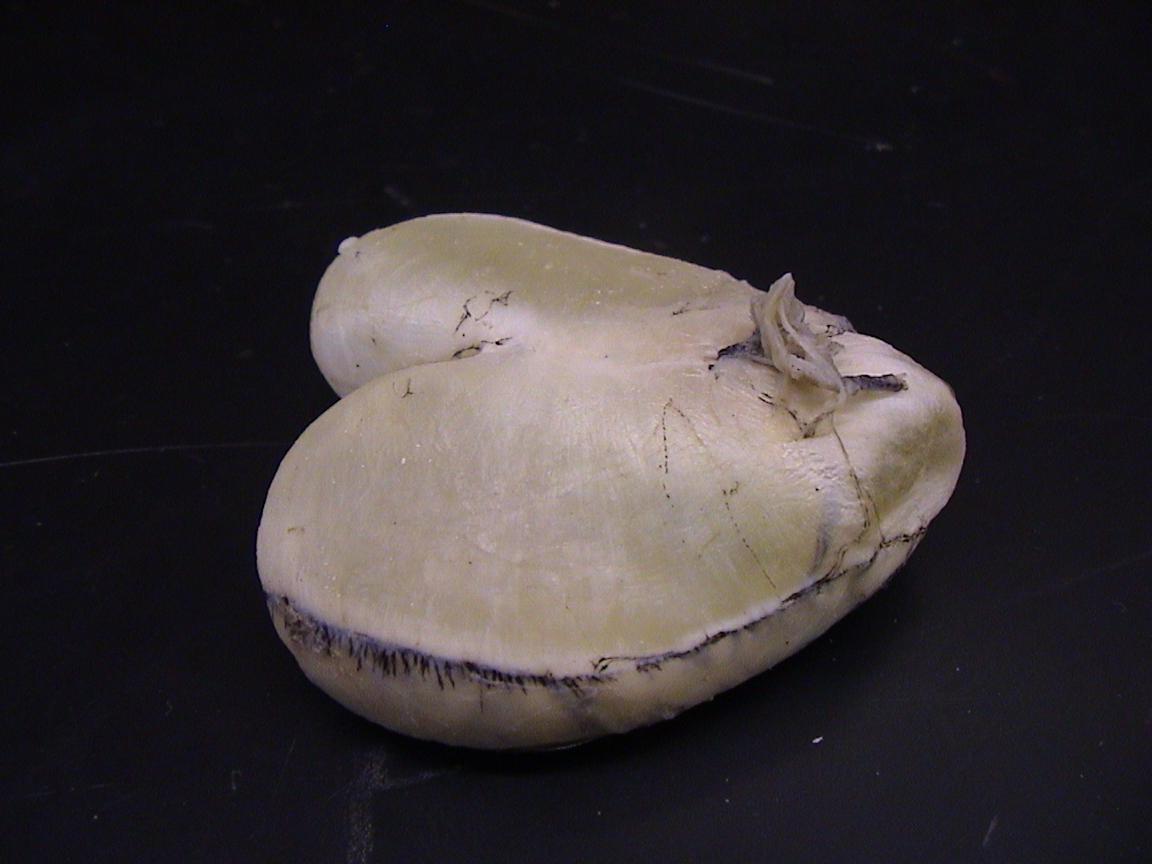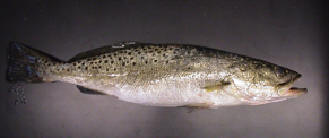David A. Mann-
dmann@marine.usf.edu
USF College of Marine Science
140 7th Ave. S.
St. Petersburg, FL 33701
Popular version of paper 4aAB2
Presented Thursday morning, May 1, 2003
145th ASA Meeting, Nashville, TN
Sound is an ideal way to communicate in the ocean, where visibility can often be limited. Many fishes produce sounds to attract mates by drumming their swimbladders (the gas bladder inside fish that is used to regulate buoyancy). Often these sounds are produced at dusk or nighttime when the fish are spawning. While vocalization and chorusing behavior has been intensively studied in frogs and birds, little has been done with fishes. The goal of this research project is to study when fish produce sounds, and how they control the timing of calling when they are calling in groups.
Damselfish
Damselfish are coral reef fishes that produce a chirp-like sound when performing
an elaborate behavior known as the signal jump. Males swim up above their
territory, and then rapidly swim downwards, while producing a chirping sound.
An individual might make thousands of these signal jumps in just one day.
Once courtship has proceeded to mating, a female will join a male and lay eggs
in a nest that the male will tend for the next 5-8 days. During spawning,
males make a quieter, shorter sound, presumably because they do not want to
advertise to as many fish, and are trying to communicate only with the spawning
partner. Damselfish, like birds, call more at dawn than any other time
of day. This 'dawn chorus' may function to minimize the time males lose
feeding during the daytime, when they feed on zooplankton in the water column.
Toadfish

The swimbladder of the gulf toadfish. The drumming muscles
are located on the sides of the swimbladder. The front of the fish would
be to the left.
Gulf Toadfish Boatwhistle (listen with Realplayer
for best results)
Toadfish are bottom-dwelling fishes found throughout the world from temperate
areas to coral reefs. Males have drumming muscles on their swimbladders,
which they use to produce a boatwhistle sound to attract mates. Like
damselfish, toadfish males guard nests in which females lay eggs. Toadfish
males have a coordinated calling pattern, where neighboring males space their
calling, seemingly to avoid overlap. However, they will also make a
grunt-like sound in the middle of a boatwhistle produced by a neighbor.
Spotted seatrout
Spotted seatrout from Tampa Bay, FL.
Drumming muscles on the body wall of the spotted seatrout.
Spotted Seatrout Sounds (listen with Realplayer
for best results)
An Aggregation of Silver Perch
Spotted seatrout belong to a family of fishes known as the croakers and drums,
which get their name from the sounds made by the fish drumming their
swimbladders. Seatrout have muscles on the body wall that contract against
the swimbladder (unlike the toadfish, whose sonic muscles insert directly on the
swimbladder). Seatrout make sounds in large choruses with seemingly
uncoordinated activity.
Differences in coordination of sound production (i.e., the degree of
overlap in calls) can be related to differences in territoriality and modes
of reproduction. Toadfish and damselfish are territorial fishes in which males
guard benthic eggs laid in nests. Sciaenids (croakers and drums) spawn planktonic
(i.e. floating) eggs, and form temporary aggregations of calling males,
leaving little room for the development of a sophisticated pattern of calling
behavior.
